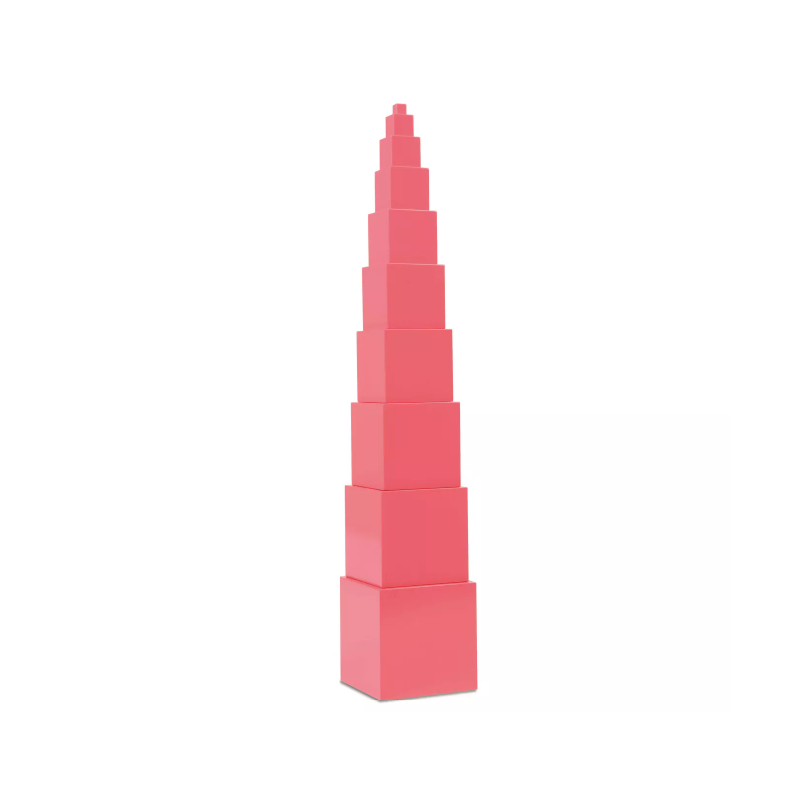Struggling to help your child grasp multiplication and division? Do they lose focus when numbers come up? Or maybe you’re searching for a hands-on, screen-free way to boost their math confidence and problem-solving skills? If turning abstract arithmetic into something they can actually understand and enjoy feels impossible, you’re not alone.
Montessori Multiplication and Division Boards are a game-changer. These tactile, visual tools bring numbers to life by turning math into an engaging, interactive experience. Whether you’re using a Montessori multiplication board to reveal number patterns or a Montessori division board to teach equal distribution, these materials help children build real understanding through movement, repetition, and discovery. From the multiplication board Montessori learners love, to the bead board Montessori, and even the classic racks and tubes Montessori, each tool is designed to make math meaningful.
In this ultimate guide, we’ll walk you through everything you need to know about Montessori multiplication and division boards from what they are and how they work to proven ways you can use them at home or in your classroom. Ready to turn math into your child’s favorite subject?

What Are Montessori Multiplication and Division Boards?
Montessori multiplication and division boards are specially designed educational tools that help young children understand the basic concepts of arithmetic. Unlike traditional worksheets or rote memorization, these boards provide a hands-on, visual way for children to engage with numbers. They turn abstract operations like multiplication and division into concrete experiences that make sense to the developing mind.
Each board typically includes a layout that children interact with using beads, counters, or markers. For instance, a multiplication board allows children to place pegs in a grid to visualize repeated addition. A division board gives them the chance to physically separate items into equal groups. These activities are more than just busy work. They help build number sense, logical thinking, and problem-solving skills.
By physically manipulating materials, children are not just memorizing formulas. They are actively learning how and why math works. This approach supports the Montessori philosophy of letting children learn through discovery, repetition, and independence. The simplicity of the boards makes them accessible, while the depth of the learning they support makes them incredibly effective.
Why These Materials Are Essential for Early Math Education
Montessori multiplication and division boards are more than just teaching aids. They support how young children naturally learn through movement, repetition, and discovery. These materials play a key role in building a strong foundation for mathematical thinking during the early years.
Supporting the Concrete to Abstract Learning Process
Children understand math better when they can see and touch it. Montessori multiplication and division boards give them a concrete way to explore math before moving on to abstract symbols and equations.
Encouraging Independent Learning and Critical Thinking
These tools let children work at their own pace, repeat activities, and self-correct. This builds confidence, focus, and problem-solving skills naturally without pressure.
Creating a Positive and Lasting Relationship with Math
When math feels like play instead of pressure, children are more likely to enjoy it. Montessori materials make learning engaging and help kids form a healthy, confident attitude toward math.
Multiplication Bead Board
The multiplication bead board is a hands-on Montessori material designed to help children visualize and internalize the concept of multiplication. It consists of a wooden board with ten rows of ten small holes, a supply of red beads, and number tiles from one to ten. Children use this board to physically lay out multiplication problems by placing the correct number of beads in rows according to the selected multiplicand and multiplier. This approach makes multiplication feel tangible. As children repeat the activity, they begin to grasp the structure of multiplication as repeated addition and naturally build memorization through action. The process not only supports understanding but also promotes concentration, pattern recognition, and logical thinking.

How to Use It in the Classroom
First step: Begin by presenting the board to the child with a simple multiplication problem, such as 3 times 2. Place the number tile “3” at the top of the board to represent the multiplier.
Second step: The child then places two red beads in each of the first three rows, aligning with the idea of three groups of two.
Third step: After placing the beads, ask the child to count all of them to find the total. This helps reinforce the equation 3 × 2 = 6 in a visual and tactile way.
Fourth step: The child can write the problem and answer on a Montessori activity sheet, helping bridge the gap between concrete work and symbolic notation.
Fifth step: Once familiar with the process, children begin selecting their own equations to work on. They may also be encouraged to complete sequences, such as an entire multiplication table.
Sixth step: The teacher observes quietly, offering support only when necessary, allowing the child to self-correct and explore independently.
Activities to Pair With the Multiplication Bead Board
Practice with a multiplication blank chart
After working with the board, children can fill in a multiplication blank chart Montessori to record the facts they’ve learned. This activity helps shift from hands-on work to abstract memorization.
Fact family exploration
Invite the child to find multiple ways to reach a product. For example, ask how many different ways they can make 12. They might try 3 × 4 or 2 × 6. This reinforces number relationships.
Real-world problem solving
Present simple scenarios such as “There are 4 trays with 5 apples each. How many apples in total?” Children use the board to model and solve the problem, connecting math to daily life.
Peer challenges
Children can write multiplication problems and trade them with classmates to solve using the board. This turns practice into a collaborative game and reinforces learning through interaction.
Pattern discovery
Encourage children to observe the bead arrangements across different rows and identify patterns, such as doubling numbers or spotting multiples of five. These patterns make math more intuitive.
Division Bead Board
The division bead board is a Montessori material that allows children to explore division in a clear and tactile way. It includes a wooden board with nine numbered columns and forty-nine small holes in each column, along with a set of green skittles and a large number of green beads. The skittles represent the number of groups or “divisors,” and the beads represent the quantity to be divided. By placing beads and skittles on the board, children physically divide a number into equal parts, giving them a strong visual and sensory experience of how division works. This helps them understand division not as something abstract, but as a process of fair sharing or grouping.

How to Use It in the Classroom
First step: Begin by choosing a simple division problem, such as 12 divided by 3. Place three skittles at the top of the board to represent the divisor.
Second step: The child counts out 12 green beads and begins placing them one by one below each skittle, forming equal columns.
Third step: Once all beads are placed, the child checks how many beads are in each column. In this case, they will see that each group has 4 beads, showing that 12 divided by 3 equals 4.
Fourth step: The child records the equation and the answer on a math recording sheet. This reinforces the link between hands-on work and written math.
Fifth step: Encourage the child to try new problems, adjusting the number of skittles and beads as needed. Repetition helps deepen understanding.
Sixth step: The teacher allows independent practice, stepping in only to guide or ask questions that spark deeper thinking, such as “What happens if the number doesn’t divide evenly?”
Activities to Pair With the Division Bead Board
Exploring remainders
Give the child a number that doesn’t divide evenly, like 13 divided by 4. Let them place beads and notice that 1 bead is left over. This naturally introduces the concept of remainders.
Matching with multiplication facts
After solving a division problem, ask the child to reverse it as a multiplication problem. For example, if 15 divided by 5 equals 3, then 3 × 5 equals 15. This helps solidify fact families.
Real-life story problems
Create scenarios such as “You have 18 cookies and want to share them among 6 children. How many cookies does each child get?” These bring purpose to the math and make learning relevant.
Sorting games
Give a mixed number of beads and ask the child to find out which numbers can divide them evenly. This builds number sense and introduces the idea of divisibility.
Group presentations
Allow children to present their division problem to peers using the board, explaining their thinking step by step. Teaching others reinforces their own understanding.
Explore Premium Montessori Materials for Young Learners
Bring hands-on learning to life with beautifully crafted Montessori materials designed to support your child’s natural development. From math tools to sensorial classics like the Pink Tower, each piece encourages independence, focus, and joyful discovery. Perfect for parents and educators looking to create an authentic Montessori environment at home or in the classroom.
 Browse Montessori Materials
Browse Montessori Materials
Practical Classroom Strategies
Montessori multiplication and division boards are powerful tools, but their effectiveness depends on how they’re integrated into daily learning. The following strategies help ensure that every child benefits, regardless of skill level or pace.
Creating Flexible Math Learning Time
Children need uninterrupted time to work with Bahan Matematika Montessori. Avoid rushing the process. Allow learners to revisit the multiplication and division boards regularly. This repetition is essential for building fluency and confidence.
Supporting Varied Learning Levels
In any Montessori classroom, children work at different stages. Some may need repeated practice with bead boards, while others are ready to record their work on a multiplication blank chart Montessori or move into abstract problem-solving. Teachers should offer individual guidance and create peer learning opportunities where appropriate.
Encouraging Recording and Reflection
As children become more confident, introduce Montessori activity sheets to document their work. Recording equations helps bridge hands-on work with written math. Prompting children to notice patterns or reflect on their process deepens understanding.
Transitioning to More Complex Work
Once basic multiplication and division facts are well established, children can begin using materials like the racks and tubes Montessori system. These introduce long multiplication and long division, supporting a natural progression in difficulty while maintaining a tactile experience.
Moving Toward Abstract Thinking
The final step is transitioning from materials to mental math and paper-based work. This shift should be gentle. Let children return to the boards if needed. Over time, they will rely more on memory and logic than physical tools, signaling readiness for abstract operations.
Final Thoughts
Montessori multiplication and division boards do more than teach math. They help children understand it at a deep and intuitive level. By allowing learners to physically build, see, and manipulate mathematical operations, these tools create a lasting foundation for numerical fluency. Children do not just memorize facts. They discover how numbers work and why.
When supported by thoughtful classroom strategies, these boards become a powerful bridge from hands-on experience to abstract reasoning. Whether a child is working independently, reflecting on patterns, or transitioning to more advanced materials, each step builds both skill and confidence.
As educators and parents, our role is to guide rather than rush the learning process. With the right materials and environment, children can master multiplication and division while developing a genuine interest in math. Montessori shows us that mathematics is not just something to be learned. It is something to be experienced.




